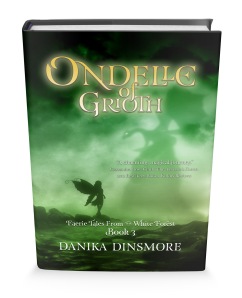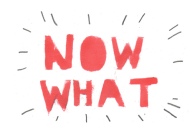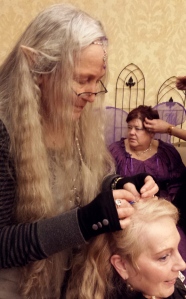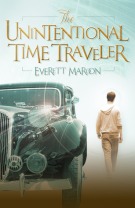<—–UNDER CONSTRUCTION—–>
As mentioned in a previous post, I have been rethinking how I use social media to meet my my professional goals. To that end I am relaunching (and rebranding) this blog to match my other social media platforms.
I had a bout of the creeping crud and was down for the count for several days, so I’ve pushed my blog relaunch. I will send out official invitations next week. Wahoo.
WEBSITE RELAUNCH and BLOG PARTY: Thursday, April 3
hors d’ oeuvres, giveaways, special guests, party games

wooden hashtags brought to you by Pine Nuts
NOTES ON SOCIAL MEDIA FOR WRITERS
I was recently in a panel/roundtable discussion for CWILL BC about social media for writers. I was asked to type up some of my notes. A bit of what I shared is below, plus I’ve added a few things I’ve thought about since that discussion:
1) YOU DON’T HAVE TO DO IT ALL
A few years ago I read Jeff Vandemeer’s excellent book Book Life: Strategies and Survival Tips for the 21st Century Writer. One of the things I took away from it is that I DON’T have to do it all! When I streamlined my marketing and social media efforts to keep from getting overwhelmed, I asked myself, what few tools can I focus on and do WELL? I picked blogging and Tweeting. I’d rather have fun and use fewer tools than juggle so many that I can’t keep up. Find what works for you and do that.

2) BLOGGING:
Not so many years ago, THREE was the magic number when it came to how many blog posts to write per week. Everywhere I turned bloggers were telling me that if I wanted repeat readers, I had to post 3 times per week. But the blogway is over-congested these days and who can come up with that much interesting material? If you can write one good post per week, you’re keeping up.
I think one really interesting posts is worth 3 mediocre ones. I also think it’s more important to be consistent then to post frequently. As a friend pointed out, the really fun blog waitbutwhy says right in the header “posts every Tuesday.” Great! Now I know to come back every Tuesday for awesome new content. (If you’ve got the goods and can post several times per week, more power to you. But don’t panic if you can’t.)
Participate in blogging communities you enjoy. Don’t expect others to hang out on your blog if you don’t take the time to hang our in theirs. USE feedly.com to aggregate and organize your blogs. In a matter of minutes you can cruise down an organized list of new articles in all your favourite blogs for tidbits of interest and the latest news. Feedly has brought the joy back into my blog reading.

3) TWITTERING:***
During the last NaNoWriMo I finally discovered the joy of hashtags. I wrote with strangers during #nanosprints as we cheered each other on. Now, when I’m at a conference and hear a great piece of advice, I #hashtag the name of the conference (#AWP2014, #GeekGirlCon) and share the info (or photos!) with others. With hashtags, you can be part of a larger conversation. For example, searching #amwriting on Twitter is a great way to meet other writers.
Also, if you ever mention anyone else’s name on twitter, USE their @name Twitter handle. That way they know you’re acknowledging them. Everyone likes to be acknowledged. For example, if you tweet this blog post, you might tweet: @danika_dinsmore nails it with her post on social media – then add a truncated link (you can use bit.ly) to the post and the hashtag #socialmediaforwriters. It will alert me and make me smile.
Use Hootsuite (or something like it) to manage your tweets. Use Hootsuite’s widget “hootlet” to tweet the blog posts you read on feedly! (You can also manage other social media tools on hootsuite like Facebook and linked-in)

4) GOODREADS:
Writers! Take advantage of the GoodReads author page and widgets. THESE ARE YOUR PEOPLE! THEY READ BOOKS AND TALK ABOUT THEM! Fill out your author profile, link your blog, link any other pertinent information about yourself, enter your book for giveaways, and use their widgets to promote your giveaway and your books on your blog. Take a look at my sidebar and you will see some GoodReads widgets. It’s all really simply and not much at all to maintain.
If you’re not sure how to use the author program, START HERE.

5) FACEBOOK. Many people are grumbling about the recent changes on facebook, especially how you now need to PAY to get your page posts seen by people who have ALREADY LIKED your page. I think the lesson for companies is this: don’t give people something for free, and then make them pay for the service later. They will grumble.
I use Facebook both personally and professionally. While some writers elect to keep one Facebook profile for all their “friends,” I chose to have a personal profile, an author page, and a white forest series page. In hindsight, I might have stuck with just a professional page because it’s a little too much upkeep, I think. But I would never merge my personal profile with my professional one. Yes, it has been pointed out to me that Facebook has made it so you can target who your posts are seen by, but I want my headers and graphics to reflect different things. I put images of my family on my personal profile and book or author related ones on my professional page.

RECOMMENDED READING
The above is just a short list of social media tips I’ve picked up. There is no way to cover it all in one post, which is why many people blog about this sort of thing every week!
There’s an overwhelming amount of advice online about how to use social media tools efficiently and effectively. But if you only have time to read one blog about how to get social media right, I recommend Anne R. Allen‘s. This week, she really nailed it with this one:
What Most Writers are Getting Wrong – where she talks about the fallacy of follower numbers
and the week before:
How to Comment on a Blog – so that you’re actually a participant in this realm

If there are any blogs on social media for writers that you use frequently and want to recommend, please do in the comment section below.
Have a Great Week and Come Back for the Party!
***NOTE on Twittering: Resist the urge to set up an “auto respond” that sends new followers a link asking them to CHECK OUT your FREE ebook. The 3 marketing consultants I asked about it said, “Just don’t.” I liken it to introducing yourself to someone at a party and the first thing they do is hand you their book. It puts people off.



 How to play?
How to play?




















